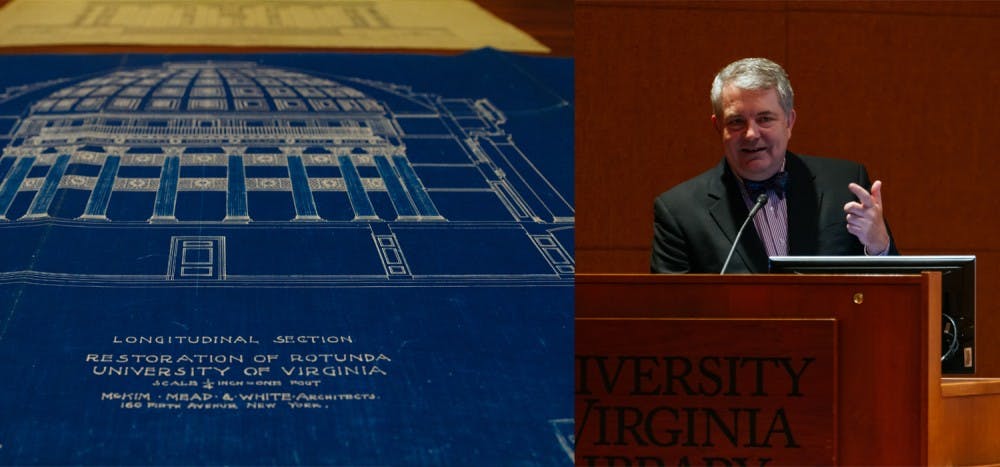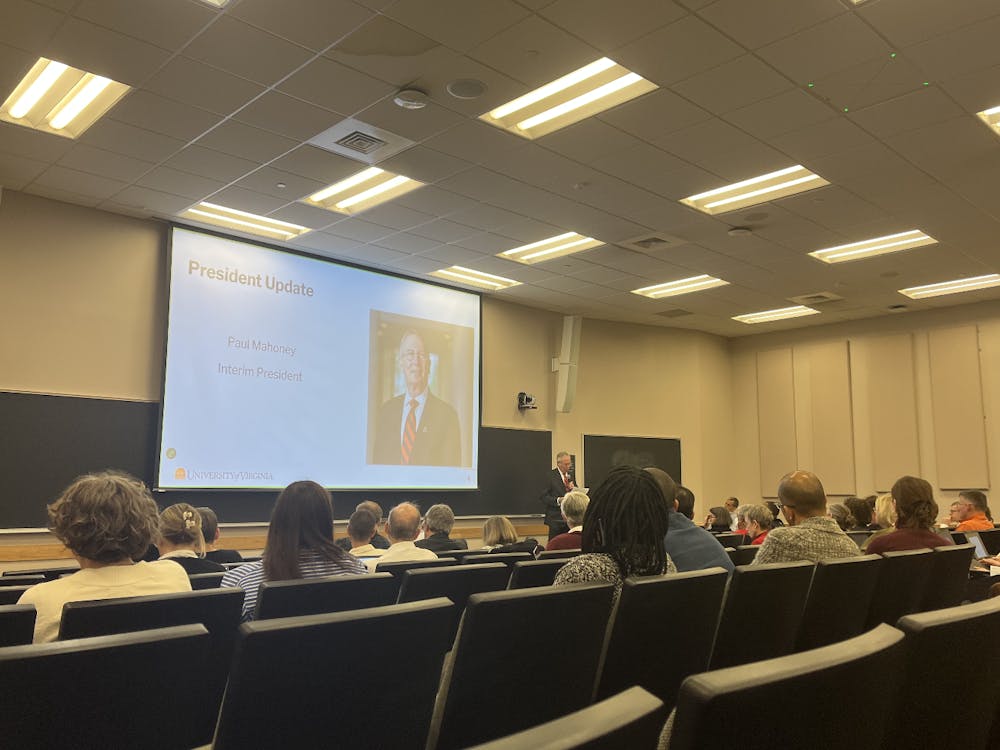Garden lovers congregated in the University’s Small Collections Library Monday to learn about the Rotunda’s restoration as part of 2017’s Historic Garden Week in Virginia, which welcomes visitors to 250 locations spread across the state, and helps fund conservation and restoration projects with revenue from tours.
Brian Hogg, the University’s senior historic preservation planner, and University landscape architect Mary Hughes shared information and updates about the Rotunda’s restoration project which was completed in the fall of 2016.
The Rotunda serves as a centerpiece for Jefferson’s Academical Village, as well as a UNESCO world heritage site.
Planning for the renovation of the Rotunda began in 2006 with the creation of a Historic Structure Report. The renovations were then completed in two phases, with phase I starting in 2013. The renovations were funded by both private donors and the state.
“The building is an inspiration in many ways,” Hogg said in his lecture Monday, recounting a brief history of the building including the addition of an annex in the 1850s, the historic fire that destroyed it in 1895 and the multiple redesigns the Rotunda has endured.
In describing the renovations, Hogg joked that when the roof was formerly prone to leaking and stain marks, “white paint [was] the University’s best friend.”
The roof was replaced with several tons of copper, and Hogg said it was a controversial decision over whether to paint the copper roof. This was remedied by the fact that Jefferson’s roof was tin-plated, which would have oxidized white. The architects chose to cover the copper in something akin to auto body paint that they estimate will last up to 25 years.
Another replacement occurred with the Rotunda column capitals. Jefferson’s were marble from Carrara, Italy, but were replaced with American marble after the annex fire.
“By the time we got to them in 2008 [and] 2009, their condition was terrible,” Hogg said. “For reasons we still don’t understand, the American marble was nowhere near as durable as the Italian marble.”
New marble was ordered from Carrara with as close to original detailing as possible. These took three weeks of carving by machine and another three weeks of refinement by hand. However, installing them was a matter of sliding out the older, crumbling blocks of stone for these new, heavy blocks.
“Despite the sophistication of the carving, the actual installation was really old-fashioned hard labor,” Hogg said.
In addition, the restoration team excavated the east courtyard for a mechanical room to allow for air conditioning and plumbing and excavated the lower east oval room to design a new visitor’s center.
“We took the opportunity with this renovation to expand the content in the room, and to try to make it both more informative and more welcoming,” Hogg explained.
This new center contains a Rotunda bell dating back to the 1820s and a chemistry oven that is the oldest type of its device left in the country, as well as many new exhibits that highlight the number of enslaved people who worked and died at the University.
The outside of the Rotunda underwent some changes as well. Prior to that, the landscaping of the Rotunda space had never had any major planning or organization due to limited funding.
“We felt that it was time to reimagine the landscape and ... make people want to occupy the space — make it vital and used,” Hughes said.
For the north terrace, the team identified a number of goals, including breaking down the expansive scale of the space, creating a human-scaled place with special character, providing a flexible area for events and rethinking the current awkward circulation. They remedied this with planting Virginia fringe trees to isolate the space more, while leaving room for the Rotunda and its wings to still be clearly visible.
Some of the old architecture even found its way back into the garden landscapes of the north terrace with the repurposing of some of the old capitals, Hughes said.
In all, the team said they are pleased with the results.
“If numbers are telling us any story, we’ve been successful,” Hogg said. “The year before we closed the building for construction, there were 108,000 people in the building. In the six months since the reopening, we have seen 103,000 visitors.”







